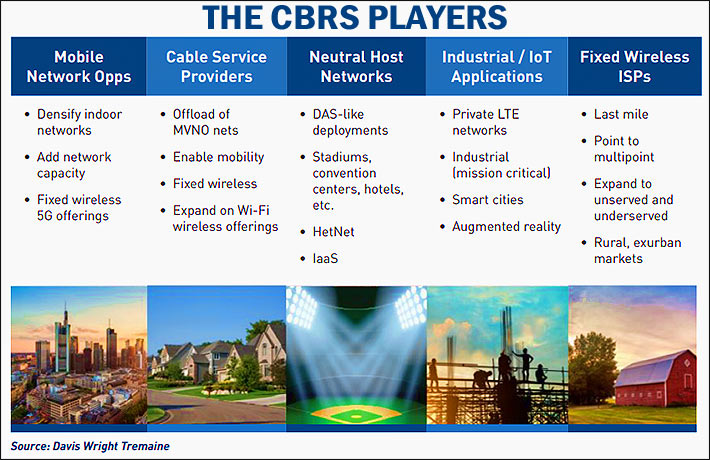
One remarkable aspect of the potential use cases for CBRS is that it is expected to play a pivotal role across multiple industry sectors, not just the mobile sector. Many expect that CBRS will be a key spectrum platform for distributed antenna system (DAS) operators, fixed wireless internet service providers (WISPs), cable operators and other businesses.
The Wireless Infrastructure Association (WIA) published a new report: “The CBRS Opportunity: New Spectrum, Stakeholders, Networks and Devices.” Written by members of WIA’s Innovation and Technology Council, the paper highlights the benefits, impact, and opportunities for commercial-use shared spectrum of Citizens Broadband Radio Service (CBRS) for existing and new networks.
“The industry needs as much spectrum as possible as quickly as possible to deploy next-generation wireless networks across the nation,” said WIA President and CEO Jonathan Adelstein in a statement. “CBRS makes available a large amount of mid-band spectrum enabled by the Federal Communications Commission’s (FCC) unique sharing plan that will create a variety of new use cases and applications for many industries. This paper offers an invaluable resource for the many new and existing players that are considering the opportunity that CBRS provides.”
The report states, “Even as CBRS spectrum will help U.S. cellular carriers better manage traffic on their networks, it also will enable many new entrants as neutral-host providers, cable and internet providers and enterprises themselves seek to manage their own wireless devices and traffic.”
The CBRS band includes 150 MHz of spectrum in the 3.5 GHz band (3550 MHz-3700 MHz) that will be available to both licensed and lightly licensed users for applications ranging from industrial internet of things (IoT) to fixed-wireless access and private LTE networks.
This whitepaper is authored by: Mark Gibson, Senior Director, Business Development, CommScope; Rikin Thakker, Vice President of Telecommunications and Spectrum Policy, MMTC, and Faculty at ECE Department, University of Maryland; and Eric Toenjes, National Market Manager of Wireless Solutions, Graybar. Federated Wireless also contributed to the report. Jim Lockwood, Aero Solutions, and Joe Mullin, InSite Wireless, chair the ITC group, which seeks to provide thought leadership on the future of the wireless industry.

















